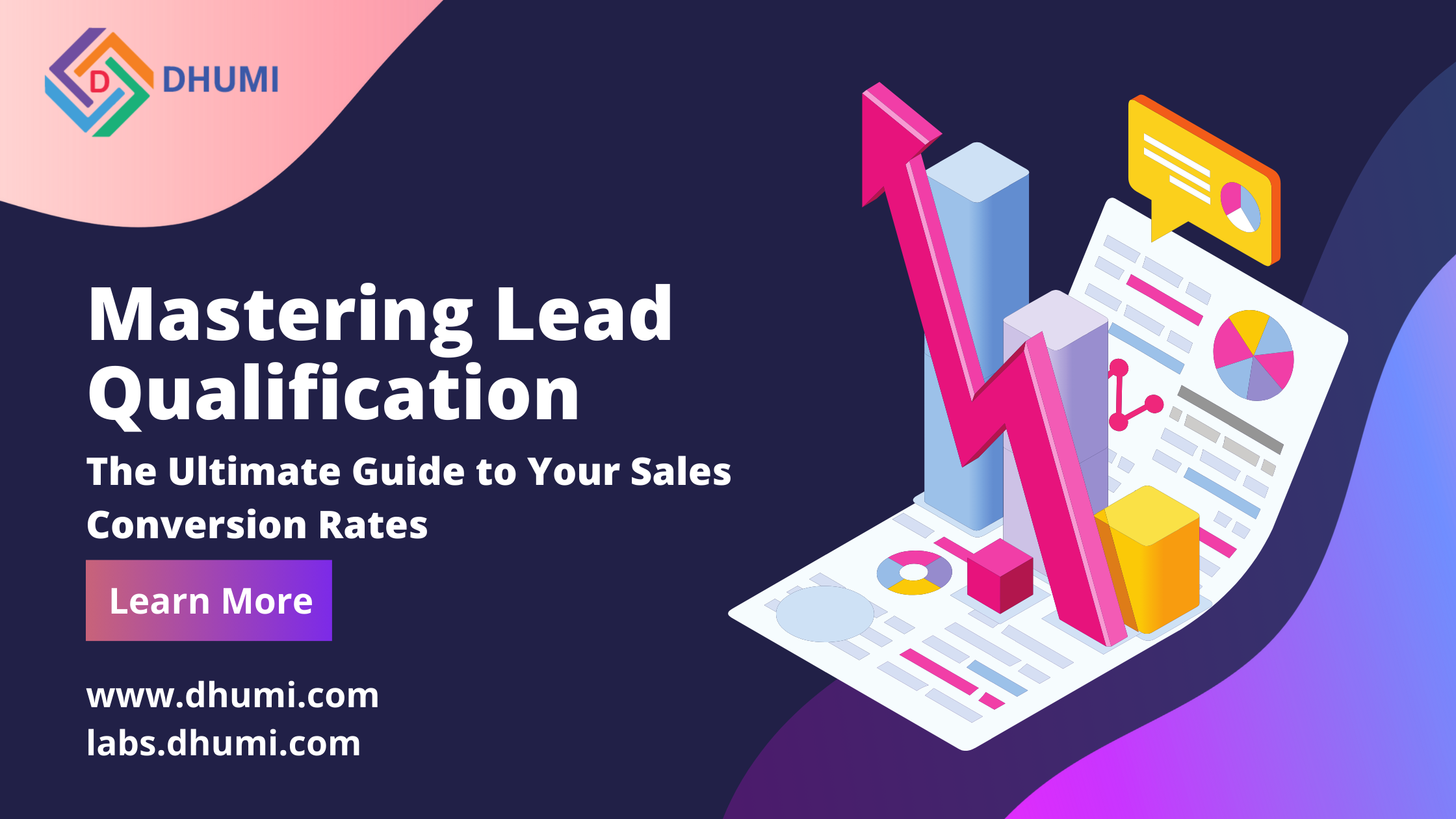Are your sales reps spending precious time chasing prospects who never convert? Do your marketing efforts generate a flood of leads, but only a trickle turns into actual customers? If this sounds familiar, you’re likely missing a critical piece of the puzzle: effective lead qualification.
Mastering lead qualification isn’t just a buzzword; it’s the engine that drives sales efficiency, boosts conversion rates, and ultimately fuels business growth. In this comprehensive guide, we’ll dive deep into what lead qualification is, why it’s indispensable, and how you can implement a robust process to turn more prospects into profitable customers.
What Exactly is Lead Qualification?
Lead qualification is the process of determining whether a prospect has a high likelihood of becoming a customer. It involves evaluating leads against a predefined set of criteria to understand their fit for your product or service, their level of interest, and their readiness to buy.
Imagine a fisherman casting a wide net. He pulls in all sorts of marine life, but he’s only interested in a specific type of fish. Lead qualification is the process of sorting through the catch, keeping the valuable fish, and releasing the rest.
Why is this sorting process so crucial?
- Maximizes Sales Team Efficiency: Your sales team’s time is valuable.
- Increases Conversion Rates: When sales reps engage with well-qualified leads, conversations are more relevant, objections are easier to handle, and the path to closing a deal is smoother.
- Improves Sales & Marketing Alignment: A clear lead qualification process creates a shared understanding between sales and marketing teams about what constitutes a “good” lead, leading to better collaboration and more effective campaigns.
- Shortens the Sales Cycle: By focusing on prospects who are further along the buyer’s journey or have a pressing need, you can often accelerate the decision-making process.
- Boosts ROI on Marketing Spend: You’ll get more bang for your marketing buck when your efforts are geared towards attracting and nurturing leads who are more likely to convert.
- Enhances Customer Experience: Interacting with prospects who are a good fit means your solutions genuinely address their pain points, leading to happier customers in the long run.
Read more about our services
Popular Lead Qualification Frameworks: Finding Your Fit
While every business is unique, several established frameworks can provide a solid foundation for your lead qualification process.
- BANT (Budget, Authority, Need, Timeline):
- Budget: Does the prospect have the financial resources to purchase your product or service?
- Example Question: “What budget range have you allocated for solving this challenge?”
- Authority: Is the person you’re speaking with the decision-maker, or can they influence the decision-making process?
- Example Question: “Who else, besides yourself, will be involved in the decision-making process for this solution?”
- Need: Does the prospect have a genuine pain point or challenge that your product/service can solve?
- Example Question: “Can you describe the specific challenges you’re facing that led you to explore solutions like ours?”
- Timeline: When is the prospect looking to make a purchase or implement a solution?
- Example Question: “What’s your ideal timeframe for getting a solution in place?”
- Budget: Does the prospect have the financial resources to purchase your product or service?
- BANT is a classic and straightforward framework, though some find it can be too rigid if applied too literally early in the conversation.
- CHAMP (Challenges, Authority, Money, Prioritization):
A slight variation on BANT, CHAMP puts “Challenges” first, emphasizing understanding the prospect’s pain points before discussing money.- Challenges: What specific problems are they trying to solve?
- Authority: Who is involved in making the decision?
- Money: What is their budget or financial capacity?
- Prioritization: How important is solving this challenge compared to other priorities?
- GPCTBA/C&I (Goals, Plans, Challenges, Timeline, Budget, Authority, Negative Consequences & Positive Implications):
- Goals: What are the prospect’s strategic objectives?
- Plans: How do they intend to achieve these goals?
- Challenges: What obstacles are they facing?
- Timeline: When do they need to achieve these goals?
- Budget: What resources are allocated?
- Authority: Who makes the final call?
- Negative Consequences: What happens if they don’t achieve their goals?
- Positive Implications: What are the benefits if they succeed?
Choose a framework that aligns with your sales process and the complexity of your offerings. You can also adapt and combine elements to create a custom framework.
Implementing Your Lead Qualification Process: A Step-by-Step Guide
- Define Your Ideal Customer Profile (ICP):
Before you can qualify leads, you need to know who you’re looking for. An ICP is a detailed description of the type of company (for B2B) or individual (for B2C) that derives the most value from your product/service and provides significant value to your business. Consider:- Industry/Niche
- Company Size/Revenue
- Geographic Location
- Pain Points & Challenges
- Goals & Aspirations
- Technographics (tools they use)
- Develop a Lead Scoring System:
Lead scoring assigns points to leads based on their demographic information (e.g., job title, industry) and their behaviors (e.g., website visits, email opens, content downloads).- Explicit Scoring: Based on information provided by the lead (e.g., company size from a form).
- Implicit Scoring: Based on observed behavior (e.g., visiting the pricing page multiple times).
Set a threshold score that automatically designates a lead as an MQL.
- Craft Effective Qualifying Questions:
Go beyond basic BANT. Your questions should be open-ended and designed to uncover needs, motivations, and potential roadblocks. Examples:- “What prompted you to look for a solution like ours today?”
- “What does success look like for you with this initiative?”
- “What are the biggest hurdles you foresee in implementing a new solution?”
- “If you don’t address this issue, what are the potential consequences for your business/team?”
- Establish Clear MQL & SQL Definitions (SLA):
Work with both marketing and sales to agree on precise definitions for MQLs and SQLs. Document these in a Service Level Agreement (SLA) that outlines responsibilities, handoff procedures, and follow-up timelines. - Utilize Technology:
- CRM (Customer Relationship Management): Your CRM is central to tracking leads, managing qualification data, and automating workflows.
- Marketing Automation Platforms: These tools can automate lead scoring, nurturing campaigns, and segment leads based on behavior.
- Sales Intelligence Tools: Provide valuable insights into prospects and their companies.
- Train Your Sales and Marketing Teams:
Everyone involved in the lead generation and sales process needs to understand the qualification criteria, frameworks, and tools. Regular training and reinforcement are key. - Monitor, Analyze, and Refine:
Lead qualification is not a “set it and forget it” process. Regularly review:- Conversion rates from MQL to SQL, and SQL to customer.
- The quality of leads being passed from marketing to sales.
- Feedback from the sales team on lead quality.
Use this data to tweak your ICP, lead scoring rules, and qualification questions.
Read more about Teamwork Skills.
Common Lead Qualification Mistakes to Avoid
- No Formal Process: Relying on gut feeling is inefficient and inconsistent.
- Qualifying Too Early or Too Aggressively: Asking for budget on the first call can be off-putting. Build rapport and understand needs first.
- Qualifying Too Late: Wasting significant time on a lead only to find out they’re not a fit.
- Ignoring Red Flags: Overlooking signs that a lead isn’t serious or isn’t a good fit for your solution.
- Siloed Sales and Marketing: Lack of communication leads to misaligned definitions and poor lead handoffs.
- Not Adapting: Sticking to outdated criteria as your market or product evolves.
The Future of Lead Qualification
As technology evolves, so does lead qualification. AI and machine learning are increasingly used to analyze vast amounts of data for more predictive lead scoring and automated qualification. Intent data, which signals a prospect’s active buying interest, is also becoming more crucial. However, the human element, understanding nuanced needs and building relationships, will always remain vital.
Take Control of Your Sales Pipeline Today
Effective lead qualification is the bedrock of a high-performing sales organization. By implementing a structured process, defining clear criteria, and fostering collaboration between your sales and marketing teams, you can stop chasing ghosts and start focusing on prospects who are genuinely ready to become valuable customers.
It’s time to transform your lead flow from a wide, shallow river into a deep, powerful current driving directly towards sales success. Start refining your lead qualification strategy today, and watch your conversion rates soar!




Interesting read! Responsible gaming is so important, and it’s good to see platforms like ph799 ph prioritizing compliance & security with KYC. Makes a big difference for peace of mind! 👍